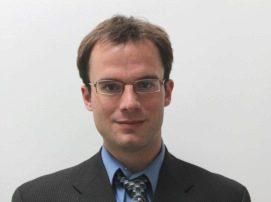
Dr. Clark is among a group of 96 researchers named by President Obama for the prestigious award; two other recipients are from Georgia Tech including Mechanical Engineering professor Baratunde Cola and Biology professor Meghan Duffy. "Discoveries in science and technology not only strengthen our economy, they inspire us as a people." President Obama said. "The impressive accomplishments of today's awardees so early in their careers promise even greater advances in the years ahead."
Dr. Clark's PhD research at Georgia Tech focused on the Aerodynamic Design, Analysis and Validation of a Supersonic Inflatable Decelerator. This led directly to the NASA Low Density Supersonic Decelerator project for which he is now the Principle Investigator at the Jet Propulsion Laboratory.
The Presidential early career awards embody the high priority the Obama Administration places on producing outstanding scientists and engineers to advance the Nation's goals; tackle grand challenges, and contribute to the American economy. The recipients are employed or funded by the following departments or agencies: Department of Agriculture, Department of Commerce, Department of Defense, Department of Education, Department of Energy, Department of Health and Human Services, Department of the Interior, Department of Veteran Affairs, Environmental Protection Agency, National Aeronautics and Space Administration, and the National Science Foundation, which join together annually to nominate the most meritorious scientists and engineers whose early career accomplishments show the greatest promise for assuring America's preeminence in science and engineering and contributing to the awarding agencies missions.
The awards, established by President Clinton in 1996, are coordinated by the Office of Science and Technology Policy within the Executive Office of the President. Awardees are selected for their pursuit of innovative research at the frontiers of science and technology and their commitment to community service as demonstrated through scientific leadership, public education, or community outreach.
